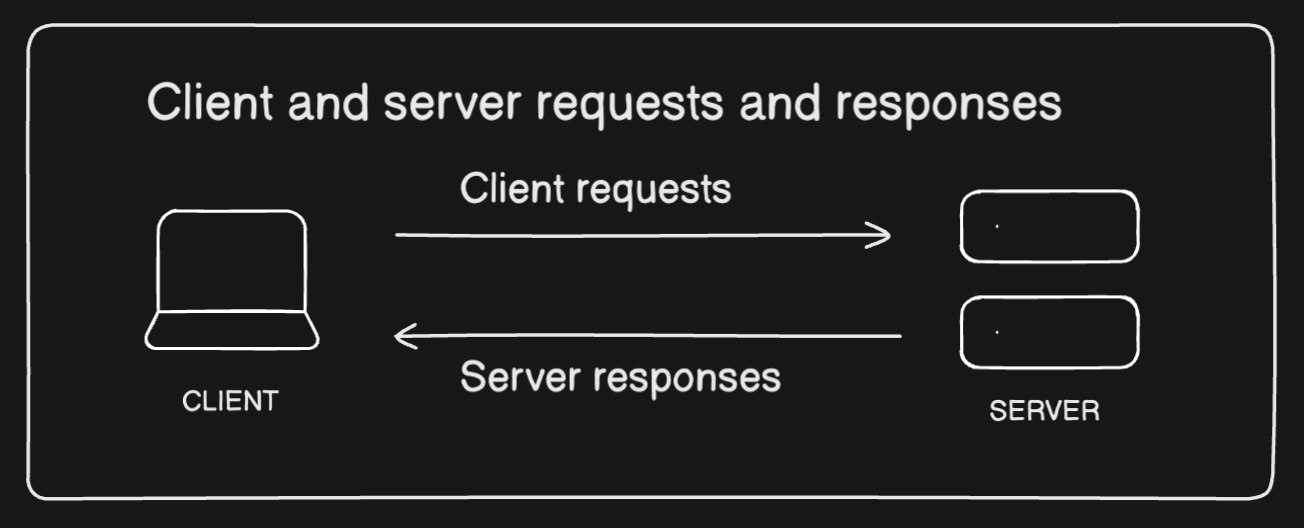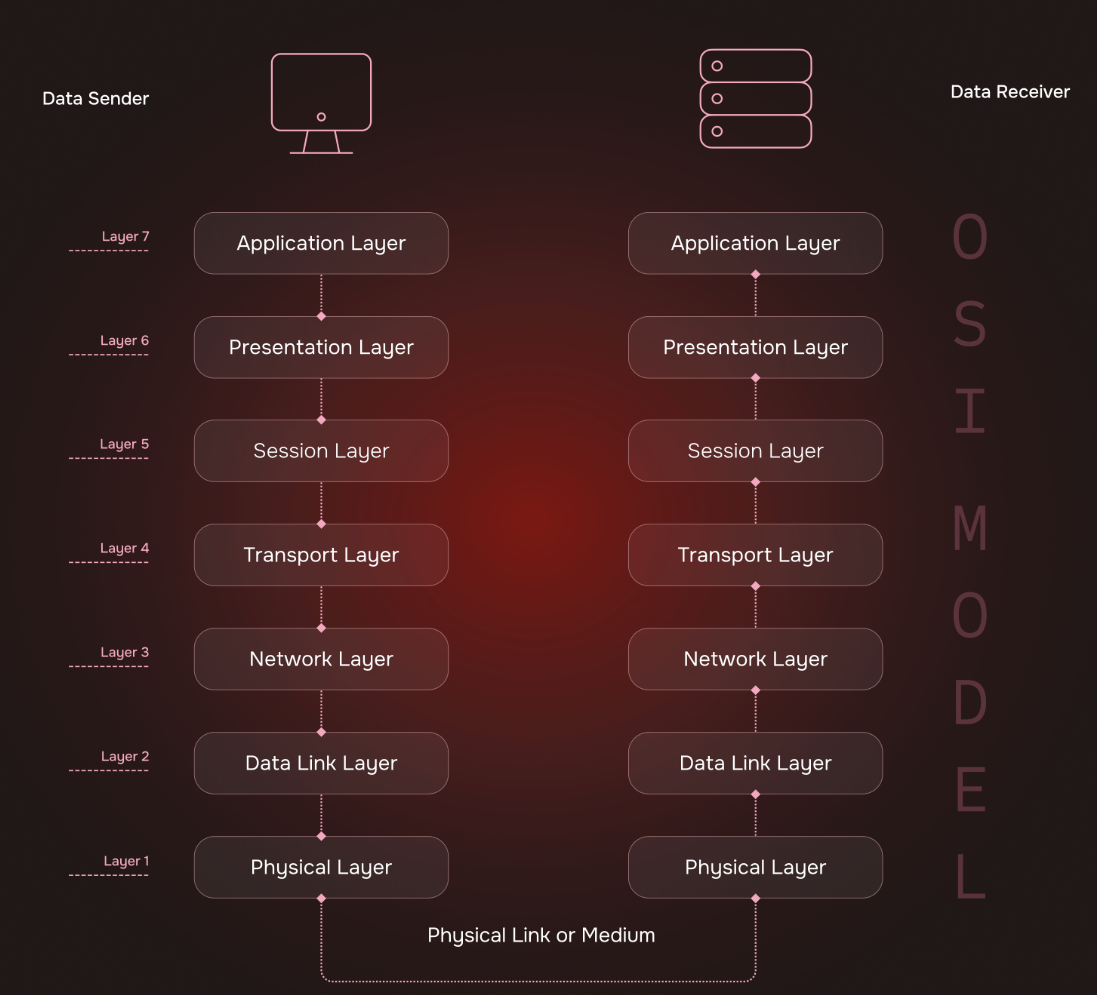Decoding Data’s Journey
 aman kumar
aman kumarHave you ever wondered how your data travels from your browser to a server?
It might seem like magic, but it's actually a complex system working behind the scenes.
In this article, I’ll explain the hidden journey of your data — from your device to the server and back. We’ll look at the key parts that make this process work. From client-server architecture to the OSI model, let's break it all down!
Client-Server Architecture
Before we dive into how data is transferred, let’s first understand client-server architecture.
The client-server architecture changed the way computing works by separating the client and server. A client is a device that sends a request, while a server is a device that sends back a response. This communication between the client and server happens over a network.

This architecture has several benefits, including resource allocation, scalability, and efficiency. It splits the application into multiple components. Microservices came from this model, breaking down large, monolithic services into smaller, interconnected services.
OSI: Open System Interconnections
Why do we need the OSI Model?
The OSI Model is used as a standard to make sure systems can communicate smoothly. Without a common standard, different systems wouldn’t be able to talk to each other. This would mean needing different versions of the same app for different types of networks, like WiFi, Fiber, LTE, and Ethernet.
By using the OSI Model, apps don’t need to know which type of network is being used (WiFi, Ethernet, etc.). Communication remains smooth, no matter the network type.

At the client side, the data moves from the top layers to the bottom layers, with each layer performing a specific task on the data.
Application Layer: When you type a link, like https://www.google.com, the browser makes a request (such as HTTP POST or GET). This request includes the data (e.g., form data, JSON payload), headers, and protocol (e.g., HTTPS).
Presentation Layer: The data is encoded or serialized into a format that’s ready to be sent (e.g., JSON, XML). If needed, encryption is applied (e.g., SSL/TLS for HTTPS).
Session Layer: A session is created if the protocol is stateful, like TCP. This layer manages the connection state between the client and server, handling the starting, maintaining, and ending of the connection.
Transport Layer: The data is broken down into smaller pieces called segments. The TCP protocol ensures reliable delivery using a three-way handshake (SYN, SYN-ACK, ACK). Each segment is labeled with source and destination port numbers (e.g., port 443 for HTTPS).
Network Layer: Each segment is wrapped into an IP packet. The packet gets source and destination IP addresses. The packet is then routed based on the destination IP address.
Data Link Layer: Each packet is wrapped in a frame for transmission. The frame contains the source and destination MAC addresses. It's prepared for the specific physical medium (e.g., Ethernet, Wi-Fi).
Physical Layer: The frame is turned into a series of electrical signals, light pulses, or radio waves. These signals are transmitted through the physical medium (e.g., copper wire, fiber-optic cable, or airwaves).
At the server side, the process is reversed. The data moves from the bottom layers to the top layers.
Physical Layer: Receives the signal and converts it back into bits.
Data Link Layer: Extracts the frame and checks the MAC address.
Network Layer: Reads the IP packet and checks the destination IP.
Transport Layer: Reassembles the segments and verifies the ports and connection state.
Session Layer: Ensures the session is valid.
Presentation Layer: Decrypts and deserializes the data (e.g., from JSON to an object).
Application Layer: Processes the request and sends a response back to the client.
conclusion
In this article, we explored how data travels from your device to a server, passing through various layers of the OSI model. It's easy to take for granted how seamless and fast this process is, but it’s the result of countless hours of hard work and innovation from engineers who designed and perfected these systems. The next time you send a message or browse a website, remember the complex journey your data takes and appreciate the brilliance behind the technology that powers it.
If you found this article helpful, feel free to share it and leave your feedback—I’d love to hear your thoughts!
Subscribe to my newsletter
Read articles from aman kumar directly inside your inbox. Subscribe to the newsletter, and don't miss out.
Written by

aman kumar
aman kumar
final year undergrade student.